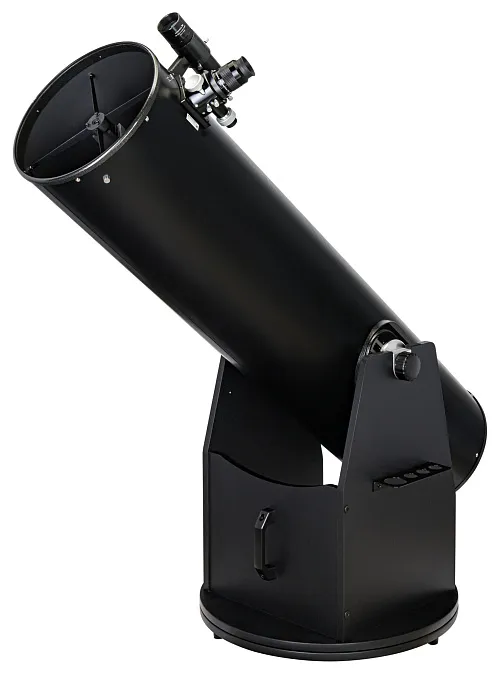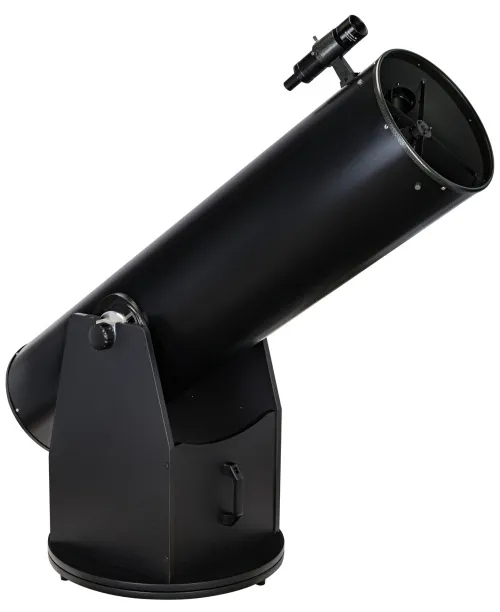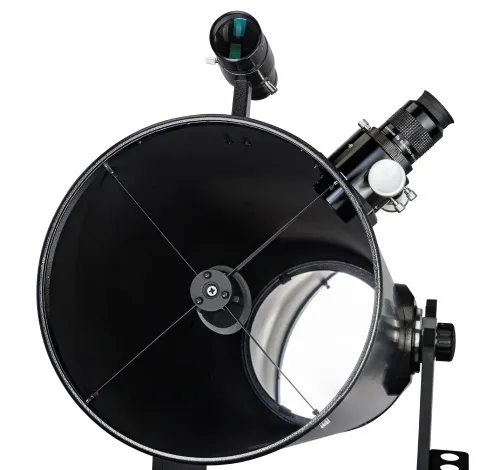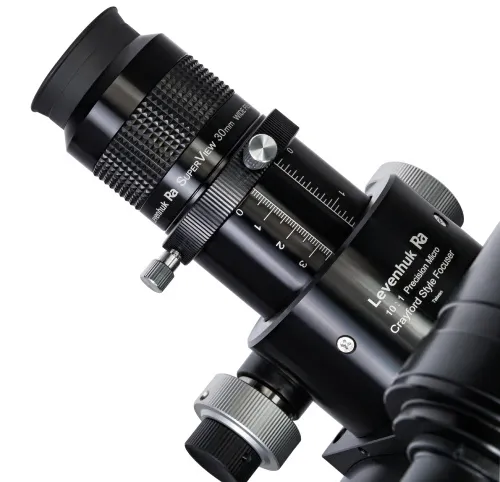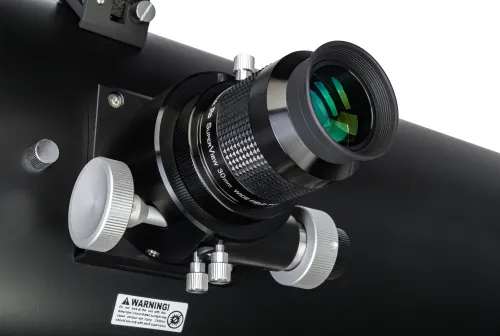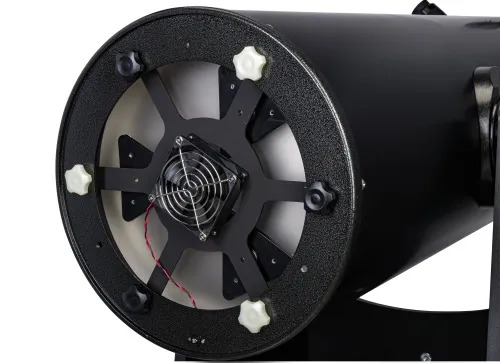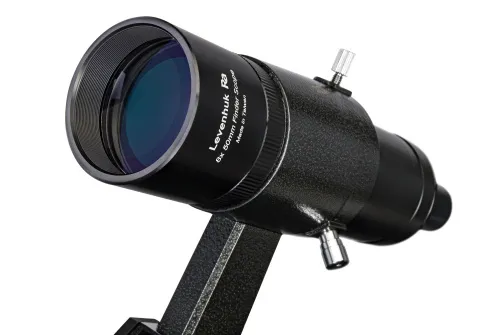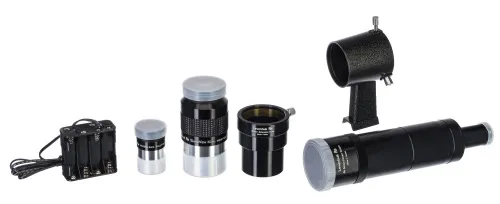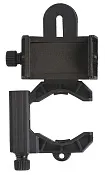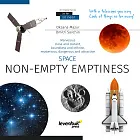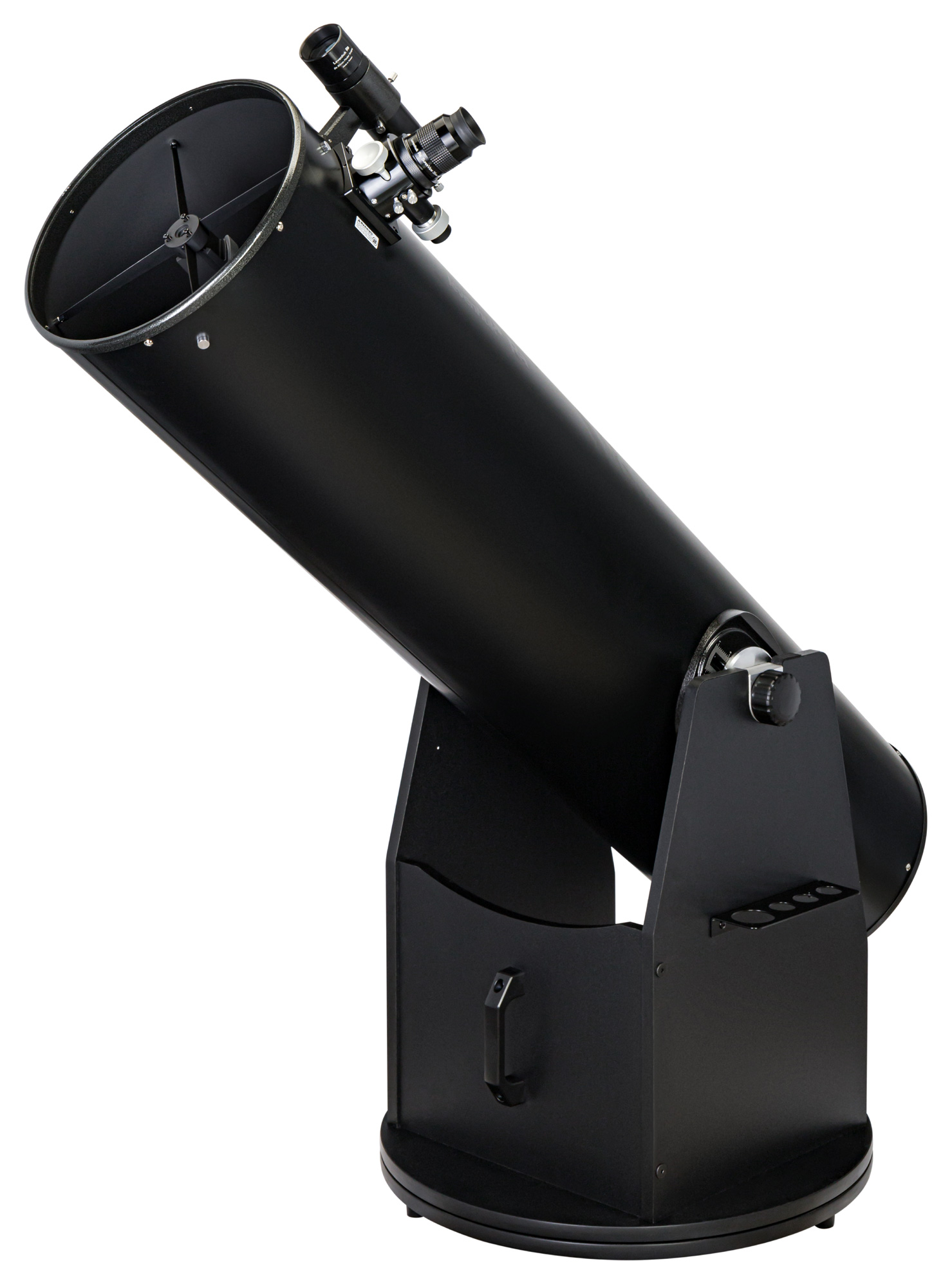Levenhuk Ra 300N Dobson Telescope
Newtonian telescope with a built-in primary mirror cooling fan. Aperture: 304 mm. Focal length: 1520 mm
| Product ID | 50750 |
| Brand | Levenhuk, Inc., USA |
| Warranty | lifetime |
| EAN | 5905555002620 |
| Package size (LxWxH) | 156x58x49 cm |
| Shipping Weight | 49.14 kg |
It is difficult to overestimate the capabilities of the Levenhuk Ra 300N Dobson telescope. With this telescope, you can see thousands of objects in the night sky, many of them in detail. Only the weather or an unfavorable state of the atmosphere can spoil the rendered picture. However, in good conditions, it will show many astronomical beauties. All objects of the NGC catalog, the Moon, planets of the Solar system with satellites, comets, etc. are available for observation. The telescope is ideal for conducting astronomy observations in the countryside and will be a good choice for both a beginner and an experienced astronomer.
Parabolic primary mirror with an aluminum coating
The primary mirror diameter is 300mm. It is parabolic, so optical distortion is minimized. The optics create a clear picture up to the maximum magnification. The aluminum coating has a reflectivity index of 92~96%. The optical component of this telescope is truly unrivaled. In addition, it features a dual-speed Crayford Focuser so that the focus can be smoothly adjusted.
Active cooling of optics for faster temperature stabilization
There is a cooling fan on the back of the telescope tube. It is used to speed up the process of temperature stabilization. Under normal conditions, it can take several hours for the optics to equalize with the ambient temperature. However, active cooling will almost halve this time. The fan is powered by batteries (purchased separately).
Dobsonian mount with an improved brake system side bearing for smooth tube movement
The Dobsonian mount has been significantly improved in comparison with the classic mounts of this type. A special brake system side bearingallows you to move the optical tube smoothly. You can move the optical tube a few centimeters up or down when using heavy eyepieces or an optional finder. There are scales on the mount sides for convenient balancing. The bearings have a more robust design, and so they will run smoothly throughout their entire service life.
Quick start kit
Besides the optical tube and mount, the kit includes a 9mm eyepiece, 30mm eyepiece, and 8x50mm finder. They will allow you to start observations right away.
Features:
- Newtonian reflector with a 300mm primary parabolic mirror
- Special aluminum coating with a reflectivity index of 92~96%
- Active cooling for faster temperature stabilization and battery operation
- Dual-speed Crayford focuser for precise focus adjustments
- Easy-to-use Dobsonian mount, brake system side bearing for smooth tube movement
- Minimum optical distortion, high aperture, and user-friendly design
The kit includes:
- Telescope optical tube
- Dobsonian mount
- Plössl 9mm eyepiece
- Super View 30mm eyepiece
- Finder 8x50mm
- Finderscope base
- Cooling fan
- User manual and lifetime warranty
| Product ID | 50750 |
| Brand | Levenhuk, Inc., USA |
| Warranty | lifetime |
| EAN | 5905555002620 |
| Package size (LxWxH) | 156x58x49 cm |
| Shipping Weight | 49.14 kg |
| Optical design | reflector |
| Optical scheme | Newtonian |
| Optics material | BK-7 |
| Optics coating | aluminum |
| Primary mirror diameter (aperture), mm | 304 |
| Secondary mirror obstruction, mm | 70 |
| Lens (mirror) shape | parabolic |
| Focal length, mm | 1520 |
| Highest practical power, x | 608 |
| Aperture ratio | f/5 |
| Resolution threshold, arcseconds | 0.456 |
| Limiting stellar magnitude | 14.9 |
| Eyepieces | Plössl 9mm (168x), Super View 30mm (50x) |
| Eyepiece barrel diameter, in | 1.25/2 |
| Objective lens obstruction: by area | 0 |
| Objective lens obstruction: by diameter | 23 |
| Finderscope | optical, 8x50 |
| Focuser | 2", Crayford, dual-speed |
| Accessory tray | ✓ |
| Telescope control | manual |
| Mount | Dobsonian |
| Mount material | wood |
| Additional | primary mirror cooling fan |
| Operating temperature range, °C | -5...+35 |
| User level | experienced users, professionals |
| Assembly and installation difficulty level | complicated |
| Observed object | deep-sky objects |
Convenient diagrams that describe how to install additional accessories on refractors and catadioptric telescopes
Find out how to assemble a telescope on an example of the Levenhuk Skyline 90x900 EQ telescope
This short guide will help you avoid typical mistakes and learn more about telescope and mounting types
The basics of astronomical observations for beginners
In this article we have gathered answers to some of the most frequently asked questions about telescopes
The most interesting celestial objects you can observe with Levenhuk telescopes
How telescopes work?
You can actually perform observations from your balcony!
All about telescope sizes, types, magnification, and mounts
Learn how to set up and use the telescope properly
Astronomy in light-polluted skies. Find out what you can observe in the city
Read an interesting comprehensive article on telescopes for little astronomers
The pictures are made with Levenhuk telescopes
Celestial objects you can observe with telescopes of different apertures
Colored and vivid images of galaxies, planets and star clusters entrance everyone who is fascinated by boundless space
Find an interesting review on the history of the changes to a refracting telescope
To make the process of choosing a telescope easier, we will tell you about the characteristics of the most popular types of telescopes today
Learn everything you need to know about refractor telescopes to make the right choice
Binary stars with the separation between their components of more than 0.5”
Faint stars up to 15 stellar magnitude
Lunar features of less than 1 mile size
Details on Mars, Phobos and Deimos if you are lucky enough
Details in the Jupiter atmosphere
Encke Gap within the a ring of Saturn
Neptune's largest moon Triton
Pluto as a small faint star
Thousands of galaxies, star clusters and nebulae
Almost every NGC catalogue objects. You may be even able to discern colors of the brightest nebulae
Don't forget that the atmospheric environment heavily affects the visibility of any given observed object.

